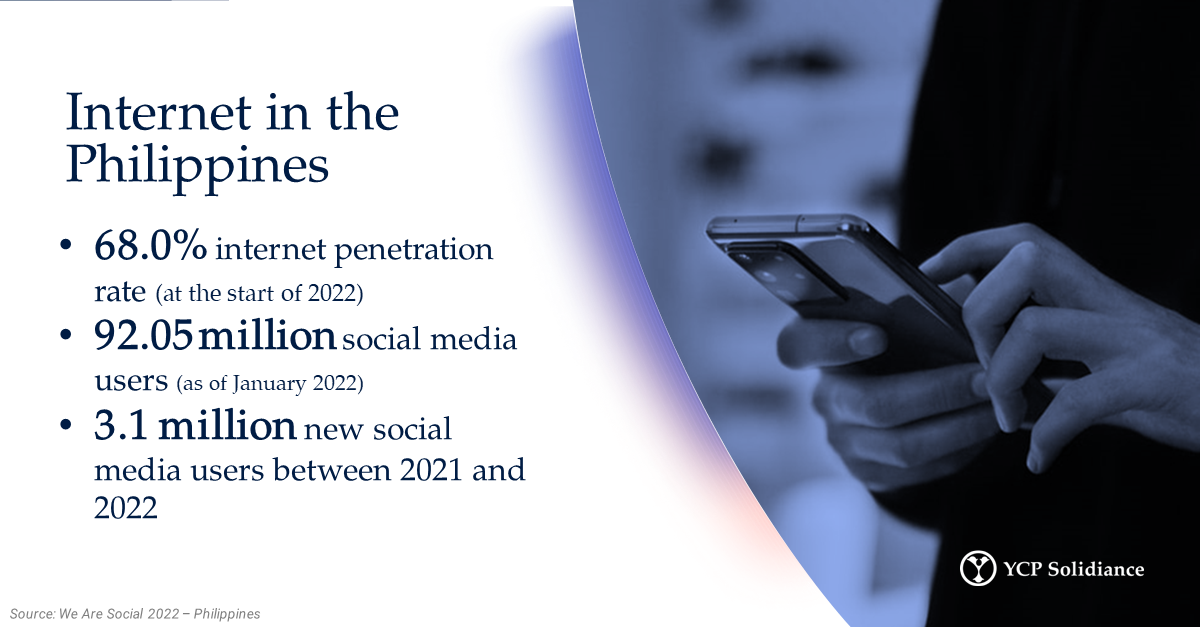Last May 2022, SpaceX CEO Elon Musk announced on Twitter that his satellite internet service, Starlink, would be coming to the Philippines, with launches in Indonesia, Malaysia, Vietnam, and Myanmar to follow in 2023.
According to an article in Nikkei Asia, Starlink is poised to become a market player in satellite internet for Southeast Asia, where internet awareness and usage are high despite slow connectivity in rural areas.
The Philippine archipelago, specifically, is poised to be a promising market for the satellite internet industry. With over 7,000 islands—majority of which have low internet connectivity—the reach of satellite internet is projected to be a gamechanger not just for everyday Filipinos looking for faster internet, but for more efficient basic government services, connectivity for companies with remote locations, and for the country’s budding start-up ecosystem.
Internet Economy in the Philippines
Data from the 2022 We Are Social report on the Philippines estimates the country’s number of internet users at a whopping 76.01 million—a number that increased by 2.1 million from 2021 to the beginning of 2022. The country is one of the world’s largest consumers of the internet, even being informally referred to as the “social media capital of the world” (Meta, Facebook’s parent company, projects that it has around 83 million users in the Philippines, with some Filipinos having more than one account).

However, internet speed in the country is rather low compared to its Southeast Asian neighbors. A 2021 article from Vice Asia states that the Philippines ranks around 100th in global speed rankings at a median 32.37mbps per second download speed—a far cry from Thailand at 220mbps and Singapore at 247mbps.
Satellite internet connectivity will not only help enhance Filipinos’ internet experience, but also have an impact on the country’s economy. According to the YCP Solidiance white paper Road to Recovery: Post Pandemic Business Outlook in Southeast Asia, the Philippines’ internet economy made up around 17.10% of ASEAN-6 countries’ total internet economy value in 2021, and is projected to drive growth in areas like fintech and logistics.
Opportunities in Satellite Internet Partnerships
The advent of mainstream satellite internet in the Philippines is also expected to drive further growth within the country’s three start-up pillars: e-commerce, fintech, and logistics.
The YCP Solidiance report The State of Start-Ups in the Philippines emphasized the importance of growing the country’s start-up ecosystem, which will have long-term effects on its post-pandemic recovery. Increased connectivity through satellite internet links will allow for inclusion in the areas of financial literacy and logistics, and especially for emerging start-up trends like agritech which caters heavily to farmers in rural areas.
Aside from Starlink, other local companies have invested in the satellite internet space: local telcos PLDT and Globe have partnered with companies in Canada and the United States to explore satellite internet services, while Japan’s Sky Perfect JSAT Group is currently providing satellite internet to monitor wind turbines in the northern Philippines.
The future is bright for the satellite internet industry to enter and grow in the Philippines, especially with consumers looking for faster internet speeds and inclusion for more rural areas. Expect more players to explore the local market, and more strides for awareness of the satellite internet industry to be made in the coming months.
For more insights on growing business industries in the Philippines, subscribe to our newsletter here, where you’ll get our latest reports exclusively delivered to your inbox.
You can also read the following related reports:






